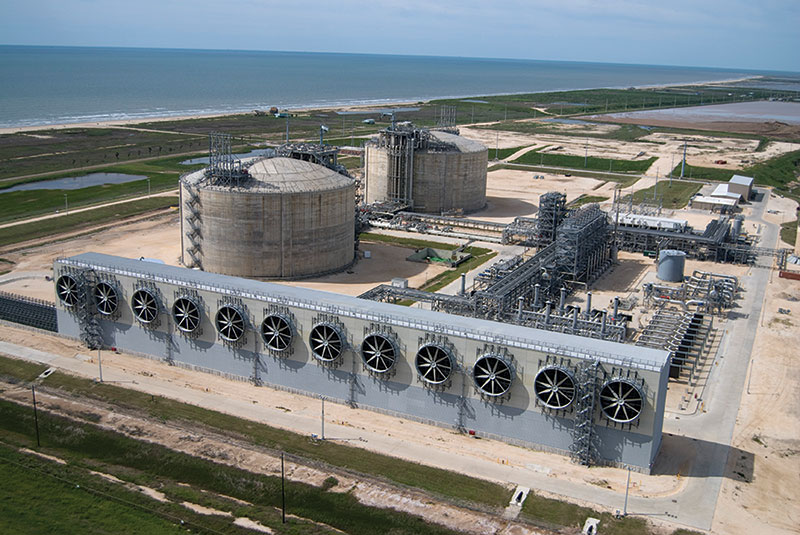Freeport LNG Gas Flows Hit Near Zero During Hurricane Beryl
(Reuters) — The amount of natural gas flowing to Freeport LNG's export plant in Texas fell close to zero on Sunday as Hurricane Beryl roared towards the Texas coast, with the amounts set to remain near zero on Monday, according to data from financial firm LSEG.
Freeport is one of the most-watched U.S. liquefied natural gas (LNG) export plants because it has a history of swaying global gas prices when it shuts.
"We have safely ramped down production at our liquefaction facility and intend to resume operations once it is safe to do so after this weather event," officials at Freeport LNG told Reuters on over the weekend.
Before Beryl approached the Texas coast, feedgas to the 2.1-Bcf/d facility averaged around 1.7 Bcf/d from June 30 to July 6, according to LSEG data.
With Freeport down, gas flows to the seven big U.S. LNG export plants, including Freeport, was on track to drop to an 11-week low of 11.0 Bcf/d on Monday, down from 11.1 Bcf/d on Sunday and an average of 12.5 Bcf/d over the prior seven days.
Freeport is the nation's third-biggest LNG export plant behind Cheniere Energy's LNG.N 4.5-Bcf/d Sabine Pass in Louisiana and 2.4-Bcf/d Corpus Christi in Texas.
Despite Beryl, other LNG export plants located near where Beryl made landfall were still expected to pull in gas on Monday, including Sabine at about 4.3 Bcf/d of feedgas, Corpus at about 2.3 Bcf/d and Cameron LNG in Louisiana at about 1.8 Bcf/d, according to LSEG data.
Each of Freeport's three liquefaction trains can turn about 0.7 Bcf/d of gas into LNG.
One billion cubic feet is enough gas to supply about 5 million U.S. homes for a day.
Related News
Related News

- Enbridge Plans 86-Mile Pipeline Expansion, Bringing 850 Workers to Northern B.C.
- Intensity, Rainbow Energy to Build 344-Mile Gas Pipeline Across North Dakota
- U.S. Moves to Block Enterprise Products’ Exports to China Over Security Risk
- 208-Mile Mississippi-to-Alabama Gas Pipeline Moves Into FERC Review
- Strike Pioneers First-of-Its-Kind Pipe-in-Pipe Installation on Gulf Coast with Enbridge
- U.S. Pipeline Expansion to Add 99 Bcf/d, Mostly for LNG Export, Report Finds
- A Systematic Approach To Ensuring Pipeline Integrity
- 275-Mile Texas-to-Oklahoma Gas Pipeline Enters Open Season
- LNG Canada Start-Up Fails to Lift Gas Prices Amid Supply Glut
- Kinder Morgan Gas Volumes Climb as Power, LNG Demand Boost Pipeline Business





Comments